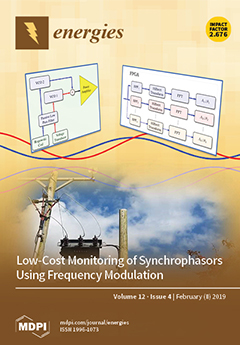Carbonated water injection (CWI) is a promising enhanced oil recovery (EOR) and CO
2 sequestration method, which overcomes the problems associated with CO
2 EOR. CO
2 mass transfer and interfacial tension (IFT) are important parameters that influence oil recovery efficiency. This study
[...] Read more.
Carbonated water injection (CWI) is a promising enhanced oil recovery (EOR) and CO
2 sequestration method, which overcomes the problems associated with CO
2 EOR. CO
2 mass transfer and interfacial tension (IFT) are important parameters that influence oil recovery efficiency. This study addresses the impact of MgCl
2 and Na
2SO
4 in carbonated water (CW) on CW/hydrocarbon IFT and CO
2 mass transfer. An axisymmetric drop shape analysis was used to estimate the IFT and the CO
2 diffusion coefficient. It was found that CW+MgCl
2 reduced both the CW/n-decane IFT (36.5%) and CO
2 mass transfer, while CW+Na
2SO
4 increased both the IFT and CO
2 mass transfer (57%). It is suggested that reduction in IFT for CW+MgCl
2 brine is mainly due to the higher hydration energy of Mg
2+. The Mg
2+ ion forms a tight bond to the first hydration shell [Mg(H
2O)
6]
2+, this increases the effective size at the interface, hence reduce IFT. Meanwhile, the SO
42− outer hydration shell has free OH groups, which may locally promote CO
2 mass transfer. The study illustrates the potential of combining salts and CW in enhancing CO
2 mass transfer that can be the base for further investigations. Furthermore, the contribution and proposed mechanisms of the different ions (SO
42− and Mg
2+) to the physical process in carbonated water/hydrocarbon have been addressed, which forms one of primary bases of EOR.
Full article





